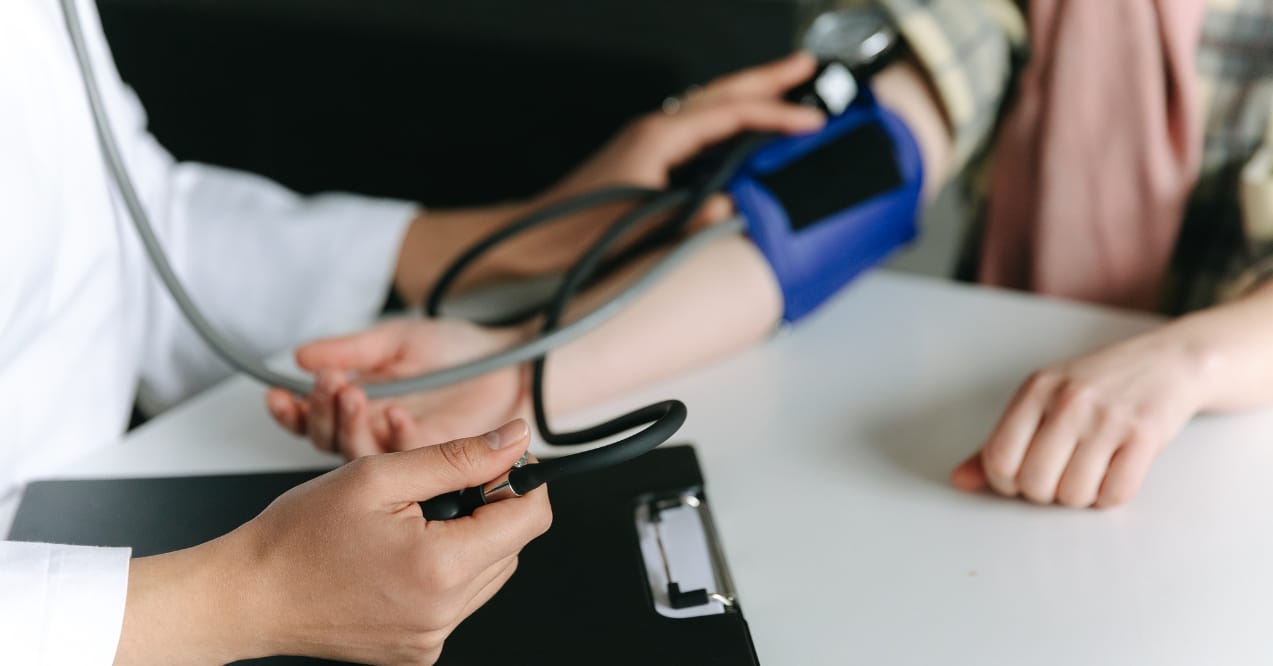How Does the Circulatory System Work With the Digestive System?
Medically reviewed by our experts


The human body functions through a remarkable partnership between its many systems. Among these, the connection between the circulatory and digestive systems stands out as vital for our daily wellness.
How does the circulatory system work with the digestive system? This teamwork allows nutrients from your meals to reach every cell while moving waste products out. This essential partnership affects your energy levels, health, and overall quality of life, especially as you age.
Key Article Findings
- Nutrients absorbed in the digestive system travel through blood vessels to nourish the entire body
- The circulatory system provides oxygen to digestive organs so they can function properly
- Both systems work together to remove waste products and maintain balance in the body
Overview of the Digestive System
The digestive system transforms food into nutrients your body can use. This complex process begins in your mouth, where chewing breaks down food physically while saliva starts chemical digestion. From there, food travels down the esophagus and into the stomach, where powerful acid and enzymes continue breaking it down.
The small intestine is where most nutrient absorption happens. This long, coiled tube has a specialized lining with tiny finger-like projections called villi that increase the surface area for absorption. Different sections of the small intestine absorb specific nutrients that will later enter the bloodstream.
The large intestine primarily absorbs water and forms waste for elimination. This maintains fluid balance and prepares remaining material for removal from the body.
Supporting players in the digestive process include the liver and pancreas. The liver produces bile that helps break down fats, while the pancreas makes enzymes that digest carbohydrates, proteins, and fats. These digestive functions are essential for preparing nutrients to enter the circulatory system.
Overview of the Circulatory System
The circulatory system serves as the body’s transportation network. At its center is the heart, a powerful muscle that pumps blood through a vast network of blood vessels. These vessels form three main types, each with specific functions in the human body.
Arteries carry oxygen-rich blood away from the heart to all tissues. They branch into smaller vessels called arterioles, which then connect to the smallest blood vessels—capillaries. At the capillary level, nutrients and oxygen exit the bloodstream and enter tissues, while waste products move into the blood.
Blood flow to digestive organs increases significantly during and after meals. This shift in circulation prioritizes the digestive process, directing more blood to the stomach and intestines to support nutrient absorption. The cardiovascular and digestive system coordination allows your body to efficiently process what you eat.
The circulatory system connects with other body systems through a complex network of vessels. This interconnection ensures that all parts of the body receive what they need to function properly. How does the digestive system work with the cardiovascular system? Their partnership forms the foundation for nutrient delivery throughout the body.
The Nutrient Transportation Process
The journey of nutrients from your meal to your cells highlights how the circulatory system works with the digestive system. This complex process begins after food has been broken down in the stomach and small intestine.
The small intestine’s inner lining contains millions of tiny projections called villi, which dramatically increase the surface area available for absorption. These structures contain networks of tiny blood vessels that collect nutrients and transport them into the bloodstream.
Different nutrients enter the blood through various mechanisms:
- Simple sugars from carbohydrates pass directly into the bloodstream
- Amino acids from proteins move through specialized transport channels
- Fatty acids and fat-soluble vitamins enter lymphatic vessels first before reaching the bloodstream
Once absorbed, these nutrients travel through a special network of blood vessels called the hepatic portal system. This pathway takes nutrient-rich blood directly to the liver, which plays a role in processing, storing, and distributing these nutrients.
The liver filters this blood, removing potentially harmful substances and regulating nutrient levels before releasing them into general circulation. Your body may store excess nutrients or send them immediately to tissues based on current needs.
Waste Removal and Circulatory Support
The partnership between these systems extends to waste management and mutual support. After nutrients are processed, waste products must be removed efficiently to maintain health.
The liver filters blood coming from the digestive tract, identifying and neutralizing potentially harmful substances from digested food. These waste products may be altered chemically to make them less harmful and easier to eliminate. The circulatory system then transports these modified waste products to the kidneys for removal through urine.
Blood flow to digestive organs supplies them with oxygen and nutrients they need to function properly. The stomach, intestines, and other digestive organs require consistent blood supply to produce digestive juices, maintain muscle contractions, and support cell renewal.
Hormones that regulate digestion travel through the bloodstream. For example, the hormone insulin helps manage blood sugar levels after a meal by signaling cells to absorb glucose from the blood. These chemical messengers coordinate activities between different parts of the digestive process.
Natural ingredients in the CL Switch supplement by Nation Health MD may potentially support healthy blood flow, which is important for digestive function and nutrient absorption.
Reduced blood flow to digestive organs may affect their ability to function properly. Maintaining healthy circulation supports optimal digestive health and effective nutrient processing throughout life.
Connection to Other Body Systems
The digestive-circulatory partnership extends beyond these two systems, creating a web of interactions throughout the human body.
The nervous system coordinates both digestive and circulatory functions. Nerve signals trigger digestive juice secretion and control the muscle contractions that push food through the digestive tract. This same system regulates heart rate and blood vessel constriction to direct blood flow where needed.
The immune system maintains a strong presence in both systems. Approximately 70% of immune cells reside in the digestive tract, protecting against harmful substances while allowing nutrients to pass. Many people wonder, does milk thistle lower cholesterol? It may support liver health, which is essential for this immune function. The bloodstream transports immune cells throughout the body to fight infection.
The respiratory system provides oxygen necessary for digestive processes. Cells lining the digestive tract require oxygen to produce energy for their functions. The circulatory system delivers this oxygen after it’s absorbed in the lungs.
Hormones use the bloodstream as their highway to regulate digestive functions. These chemical messengers from various glands coordinate activities between different parts of the digestive system. For those looking to maintain a healthy weight, knowing how to get your body to burn stored fat involves both these systems working effectively together.
Conclusion
The interconnection between the circulatory and digestive systems forms an essential partnership that supports overall wellness. These systems work together to nourish your body, from breaking down food to delivering nutrients to cells that need them.
Maintaining the health of both systems through good nutrition, regular physical activity, and supplements for heart health may support this vital relationship. Your daily choices directly impact how effectively these systems work together to maintain your health and vitality.
The circulatory system transports nutrients absorbed by the digestive system to all body cells. It also brings oxygen to digestive organs and carries away waste products, supporting proper digestion and nutrient use.
Nutrients from food enter blood vessels surrounding the small intestine. The blood carries these nutrients to the liver for processing before distributing them throughout the body to nourish cells.
After meals, blood flow increases to digestive organs. This helps the stomach and intestines digest food more efficiently by providing extra oxygen and removing waste products more quickly.
The liver processes nutrients coming from the digestive system through the portal vein. It regulates nutrient levels in the blood, produces bile for fat digestion, and removes toxins from blood.
The nervous system coordinates both systems by regulating digestive secretions, controlling gut movements, adjusting heart rate, and directing blood flow to digestive organs when needed.
Your Digestive System & How it Works. (2025). National Institute of Diabetes and Digestive and Kidney Diseases.
Professional, C. C. M. (2024). Digestive system. Cleveland Clinic.
Institute for Quality and Efficiency in Health Care (IQWiG). (2023). In brief: How does the blood circulatory system work? InformedHealth.org – NCBI Bookshelf.
Professional, C. C. M. (2025). Circulatory system. Cleveland Clinic.
Basile, E. J., Launico, M. V., & Sheer, A. J. (2023). Physiology, nutrient absorption. StatPearls – NCBI Bookshelf.
Kalra, A., Yetiskul, E., Wehrle, C. J., & Tuma, F. (2023). Physiology, liver. StatPearls – NCBI Bookshelf.
Rahman, M. S., Et Al. (2021). Role of insulin in Health and Disease: An update. International Journal of Molecular Sciences, 22(12), 6403.
Tobias, A., & Sadiq, N. M. (2022). Physiology, gastrointestinal nervous control. StatPearls – NCBI Bookshelf.
Wiertsema, S. P., Et Al. (2021). The Interplay between the Gut Microbiome and the Immune System in the Context of Infectious Diseases throughout Life and the Role of Nutrition in Optimizing Treatment Strategies. Nutrients, 13(3), 886.
Parikh, A., & Thevenin, C. (2023). Physiology, gastrointestinal hormonal control. StatPearls – NCBI Bookshelf.
Popular Articles
Advertisement. This site offers health, wellness, fitness and nutritional information and is designed for educational purposes only. You should not rely on this information as a substitute for, nor does it replace, professional medical advice, diagnosis, or treatment. If you have any concerns or questions about your health, you should always consult with a physician or other health-care professional. Do not disregard, avoid or delay obtaining medical or health related advice from your health-care professional because of something you may have read on this site. The use of any information provided on this site is solely at your own risk.







